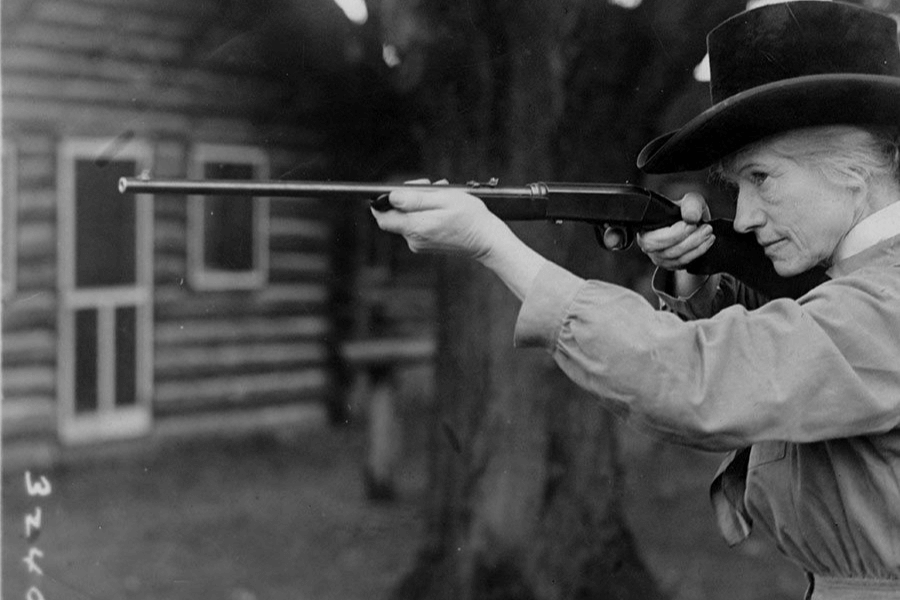Products are selected by our editors, we may earn commission from links on this page.
In the unforgiving sprawl of the American frontier, where survival meant carrying a gun and knowing how to use it, one girl rewrote the rules of power. Her name was Annie Oakley. She was born poor in 1860s Ohio, forged in hardship, and destined to outshoot the men who mocked her. She didn’t just perform for crowds; she shattered expectations in every dusty town and royal court she crossed. Who she was, how she rose, and why her legend still stings like gunpowder—the real story behind the myth is even more explosive than anything the history books ever taught us.
A Name Forged in Fire

She was born Phoebe Ann Moses in rural Darke County, Ohio—quiet, curious, one of seven children. But destiny would forge a new identity from the echoes of a rifle shot.
Her sisters called her “Annie,” affectionately. “Oakley” came later, borrowed from a nearby town, stitched together into a name that would ricochet across history with every target she split in two.
At a time when girls were rarely seen near a rifle, young Annie was already rewriting her fate—and in the woods of Ohio, her legend had only just begun.
Trigger Lessons in the Wild

Jacob Moses cradled the rifle in his arms. “You ready, girl?” Annie nodded. The squirrel didn’t flinch—until Annie, just eight, placed a perfect shot through its tiny skull.
Hunting wasn’t sport in their home—it was survival. Her father, quiet and watchful, became her first teacher. The woods were her classroom; the rifle, her pencil.
Annie’s aim was precise, almost eerie. By twelve, she wasn’t just feeding her family—she was becoming something else entirely. The forest whispered her name. And others would soon echo it louder.
The Girl and the Gun Ban

The rifle cracked through morning silence. Her mother, hearing it, sprinted from the barn. “Phoebe Ann Moses!” she gasped. “Put that down before you shoot your eye out!”
At eight, Annie had already made her first kill. But to her mother, firearms were not meant for girls. She banned Annie from touching a gun for eight excruciating months.
But a fire had sparked. Annie obeyed… for a while. When she finally returned to the rifle, her hands steadied without tremor. And this time, she didn’t miss a single shot.
Back to the Barrel

When the ban lifted, Annie resumed shooting with near-fanatical intensity. “I’ll never stop again,” she vowed quietly. The squirrels didn’t stand a chance—and neither would the world.
Tragedy struck when her father passed. To support her family, Annie was sent to work for a wealthy couple. But the promise of education masked cruelty behind closed doors.
Mistreated and humiliated, she fled back home. She emerged not broken but sharpened, like a whetted blade. Annie was ready to aim higher, and life was about to take notice.
The Debt She Shot Away

Back in Ohio, Annie hunted with precision, selling meat to local shops. “Best meat in the county,” they’d say. By fifteen, she had paid off her mother’s mortgage.
She didn’t just feed her family—she freed them. Each coin earned from a rabbit or pheasant was a bullet of liberation, a testament to her steel resolve.
But one crisp November morning in Cincinnati, a new opportunity appeared: a shooting match! A man named Frank Butler was waiting. And Annie was about to change everything.
The Match That Changed Everything

The crowd leaned in as a teenage girl stepped onto the firing line. She held her rifle like an extension of her hand. The man beside her smirked: Frank Butler.
“Hundred dollars says I win,” Frank teased, tipping his hat. Annie simply nodded. One by one, the targets exploded—his confidence cracked when he missed a single clay.
“Oakley shattered gender expectations,” writes historian Glenda Riley, “She made skill the equalizer.” And from that day on, Frank would follow her aim long after the last shot rang out.
Beating the Man She Married

A year after the match, Frank married the girl who beat him. “You never miss,” he’d whisper, amused. They traveled as a duo, their love growing between shows and gunfire.
She was his match in every sense—onstage and off. And while the spotlight often landed on Annie, Frank never seemed to mind. He was her biggest fan.
They shared fifty years and countless shows. But when Annie died in 1926, Frank followed just eighteen days later—as if even death couldn’t separate them for long.
Charm in Lace and Gunpowder

Though she fired rifles with terrifying precision, Annie never shed her softness. “A lady should always be a lady,” she’d say, slipping into lace dresses before stepping on stage.
She embroidered between tours, crafted her own skirts, and stayed poised amid the grit of gunpowder and applause. Grace and grit—she wore both like fine silk.
That contrast became her signature. But it was never an act. Annie Oakley was the real deal—and her charm was about to dazzle royalty far beyond America’s borders.
Death Almost Took Her Aim

In 1901, metal screeched as carriages collided. A train wreck threw Annie’s body like a rag doll. Bones cracked. Her spine twisted. Silence followed. For a moment, she couldn’t move.
Five spinal surgeries. Months in bed. Rumors swirled—Annie was done. But they didn’t know her fire. “I’ll be back,” she whispered. Her finger twitched. Her aim wasn’t lost.
By 1902, she was back on tour. Her dress hid the scars, but the strength-oh, it radiated. Annie Oakley had returned from the brink. But her biggest feats lay ahead.
The Smallest Giant on Stage

Audiences expected someone towering, maybe fearsome. But Annie was just five feet tall, barely over a hundred pounds. Then she picked up the rifle, and silence always followed.
She didn’t just perform. She stunned. Frank would toss coins midair. Annie’s shots would split them cleanly before they hit the ground. “I believe in miracles,” one man said.
Together, she and Frank toured the world. But this wasn’t luck—it was preparation, discipline, and something electric in her eyes. And soon, the world would witness tricks no one believed possible.
Her Shots Defied Belief

Spectators gasped as Annie tossed a card in the air, took thirty paces, turned, and—crack!—split it clean through. No wires. No trick bullets. Just unrelenting precision.
She snuffed flames off candles. Shot through coins and swung targets. Sometimes she’d face backward, aim with a mirror, and still hit dead center. “Is it magic?” people whispered.
Frank smiled. “It’s Annie.” But even he sometimes marveled at her skill. And while the crowds roared, a powerful figure behind the curtain had just taken notice of her act.
The Star Cody Almost Missed

William “Buffalo Bill” Cody was king of showmen. He’d seen it all—until Annie. “She’s good,” he said, but hesitated. His star sharpshooter, Adam Bogardus, wouldn’t share the spotlight.
A woman? With better aim than Bogardus? It could disrupt everything. Bill passed on Annie—for now. She kept performing elsewhere, quietly biding her time, her eye always steady.
But destiny has its own aim. When fate struck Bogardus on a riverboat, Annie’s path to the Wild West stage swung wide open. And she would seize it completely.
One Misfire. One Chance

The Mississippi churned as Buffalo Bill’s performers escaped the sinking steamboat. Bogardus lost more than his luggage—his prized rifles vanished beneath the waves. His hands never steadied again.
His aim faltered. His confidence crumbled. Audiences noticed. Eventually, he stepped down. “I’m done,” he muttered. Bill needed a new star. One name floated up again: Oakley.
This time, he said yes. Annie joined the Wild West Show. She was no longer warming up for history—she was about to own center stage with every thunderous shot.
The Chief Meets His Match

Sitting Bull crossed his arms, skeptical. He’d defeated Custer, faced down armies. What could a five-foot white woman with a gun possibly show him? Annie raised her rifle.
One shot. Then another. Then five, without missing. The chief’s eyes widened. He approached her, smiling slightly. “You shoot like a warrior spirit,” he said, handing over sixty-five dollars.
“For a photo,” he added. She laughed. It would be the beginning of an unlikely friendship—one that would take a surprising turn just days later with a sacred gift.
Adopted by a Legend

The envelope arrived at Annie’s hotel with $65 and a polite request for an autograph. She returned the money with a signed photo. Sitting Bull, deeply moved, replied differently.
He gifted her a pair of his own moccasins and gave her a Lakota name: Watanya Cicilla—“Little Sure Shot.” The bond wasn’t just admiration—it was spiritual.
“I adopt you,” he told her softly. And when he joined Buffalo Bill’s show briefly, he stood beside her, proud as any father. But the world was just beginning to notice her.
When the Royals Held Their Breath
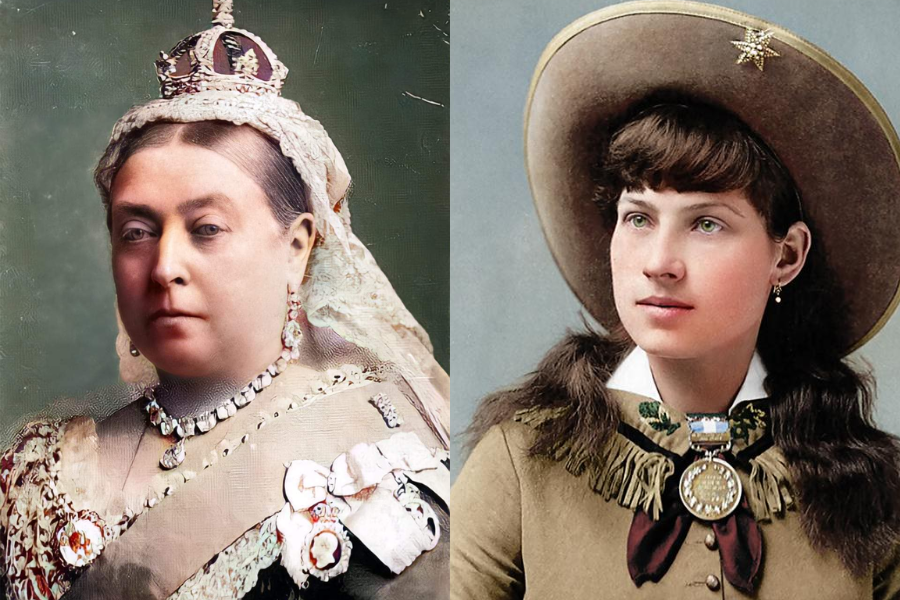
The ship docked in England, and word spread quickly—“The American woman who shoots fire.” Crowds packed the stands. Royalty leaned forward. Annie Oakley stepped into the European spotlight.
In Berlin, she shot the ash off Kaiser Wilhelm’s cigarette. One flick of the trigger—no hesitation. “She could’ve ended a war,” people would later whisper, half-joking.
Queen Victoria saw her in London and called her “a clever little girl.” But this clever girl had more than clever tricks—she was about to become a global icon.
A Queen’s Compliment

“I was most entertained,” Queen Victoria said with a grin. Annie curtsied politely, heart pounding. The Wild West show continued its sweep through Europe—France, Italy, even the Paris Exposition.
The press adored her. Crowds surged wherever she traveled. Annie had become more than a performer—she was a phenomenon. Her image graced pamphlets, posters, even royal invitations.
In Senegal, a king reportedly begged for her help—his tiger population was out of control. Annie smiled. “Well, I do enjoy a good challenge.” And she was just warming up.
Fifty Women. One Offer

In 1898, war clouds gathered over Cuba. Annie sat at her writing desk, rifling through ammunition and ambition. She penned a letter to President McKinley with bold intent.
“I can raise a regiment of fifty lady sharpshooters,” she wrote. Trained, armed, and ready. Her offer was ignored. Washington wasn’t ready for women with rifles—not yet.
But Annie had already aimed beyond her time. As journalist Karen Blumenthal notes, “She wasn’t just challenging the battlefield—she was challenging the idea that women had no place in national defense.”
Fighting Without a Rifle
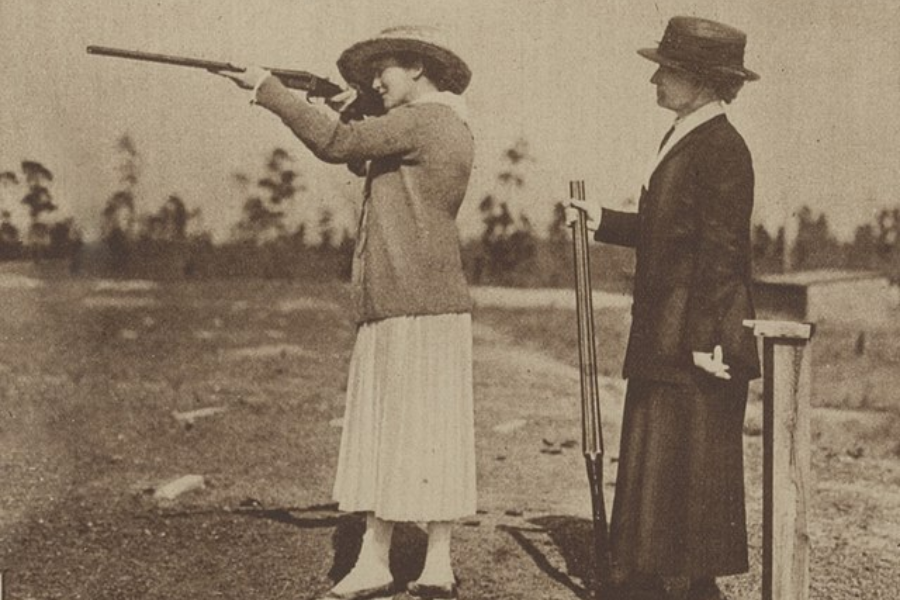
When the Great War ignited Europe, Annie Oakley again stepped forward. “Let me train the women,” she told the War Department. Silence. Her offer went unanswered—again.
But Annie didn’t wait for permission. She visited camps, trained soldiers, and held exhibitions to raise funds for the Red Cross. Her skill became a symbol of hope.
She volunteered endlessly, refusing to fade into quiet retirement. “If the boys can fight,” she said, “I can teach them to shoot.” And even behind those efforts, still rumors were swirling.
The Lie That Tried to Break Her

In 1903, Annie awoke to headlines splashed across America. Cocaine addict. Thief. Degenerate. Lies, every word. But the damage spread like wildfire, started by Hearst’s powerful newspaper empire.
Annie was devastated. Her pristine image, shattered by a story involving a woman with a similar name. “That wasn’t me,” she said. No one seemed to listen.
But Annie Oakley wasn’t built to crumble. She rose with flint in her eyes and a lawyer by her side. The woman who never missed a shot had a new target.
The Scandal That Nearly Crushed Her
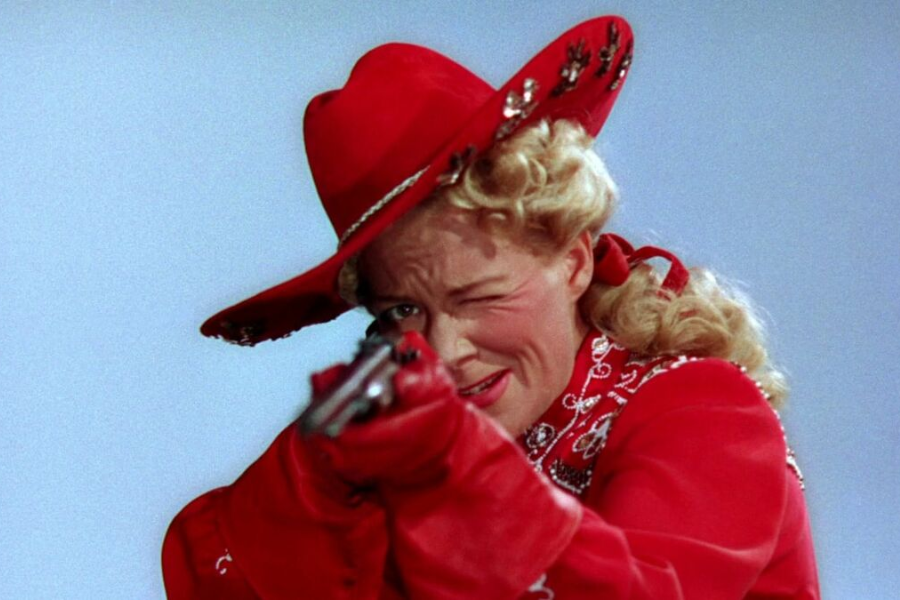
The false report claimed Annie had stolen a man’s pants to buy drugs. “Preposterous,” she hissed. But scandal didn’t wait for facts—it devoured reputations with hungry teeth.
The humiliation was unbearable. She grew ill from the stress, barely able to eat. “I could fade,” she admitted. But in Annie Oakley’s world, quitting wasn’t in her chamber.
She prepared for war—not with bullets, but with court papers. It would take years, and most of her savings. But she aimed for justice. And she never missed.
A Case of Mistaken Infamy
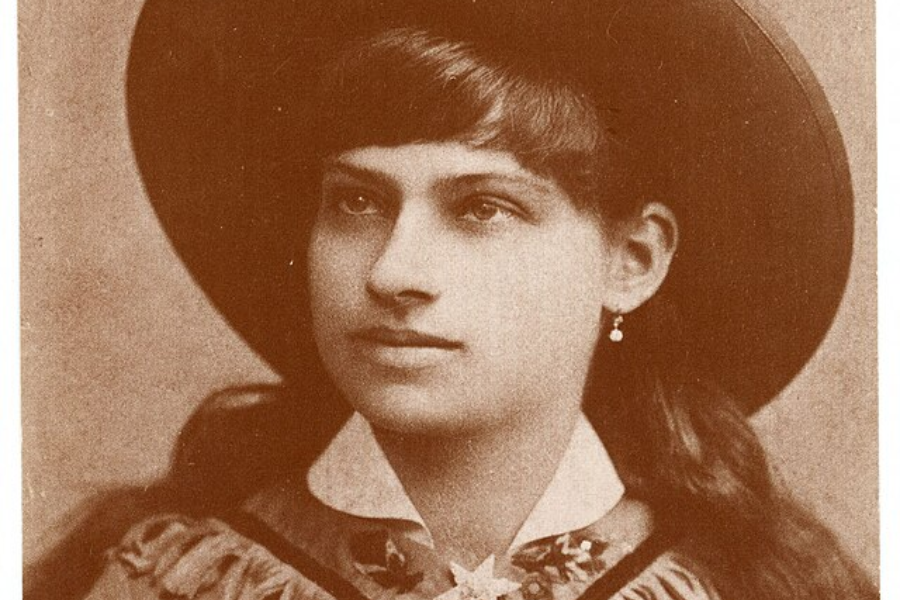
Detectives finally uncovered the truth. The real culprit was a burlesque dancer named Any Oakley—one letter off. Wrong town. Wrong life. But the newspapers didn’t care.
Hearst refused to retract. Instead, he doubled down, hiring investigators to dig through Annie’s past, desperate to justify the lie. “You’ll find nothing,” she warned him coldly.
Still, the damage was done. Reputation stained, heart bruised. But Annie squared her shoulders. If they wanted a fight, she’d give them the kind only a sharpshooter could win.
Justice, Bullet by Bullet

Fifty-five lawsuits. Each one a bullet fired from Annie’s legal rifle. She won fifty-four, one after another, as Hearst’s empire squirmed under the weight of courtroom truths.
He eventually paid her $27,000—a fortune then. But the legal fees nearly drained her winnings. “I don’t care,” she said. “My name is worth more than gold.”
The trials left scars, but also satisfaction. Annie had cleared her name. Now, with the storm behind her, it was time to pick up her rifle and reclaim the spotlight.
Shot to Stardom at Wimbledon

Before Wimbledon meant tennis, it meant targets. There, during Queen Victoria’s Jubilee, Annie outshot the finest in Europe. “The girl from Ohio,” the papers said. “Unstoppable.”
Thomas Edison noticed. He filmed her for his Kinetoscope—The Little Sure Shot of the Wild West. Bullets flew, frames flickered, and history was captured on celluloid.
She later played a fictional sharpshooter on stage. But the truth was already more cinematic than fiction. Still, Annie’s greatest legacy wouldn’t be seen—it would be heard, whispered across arenas.
A Name That Entered the Dictionary
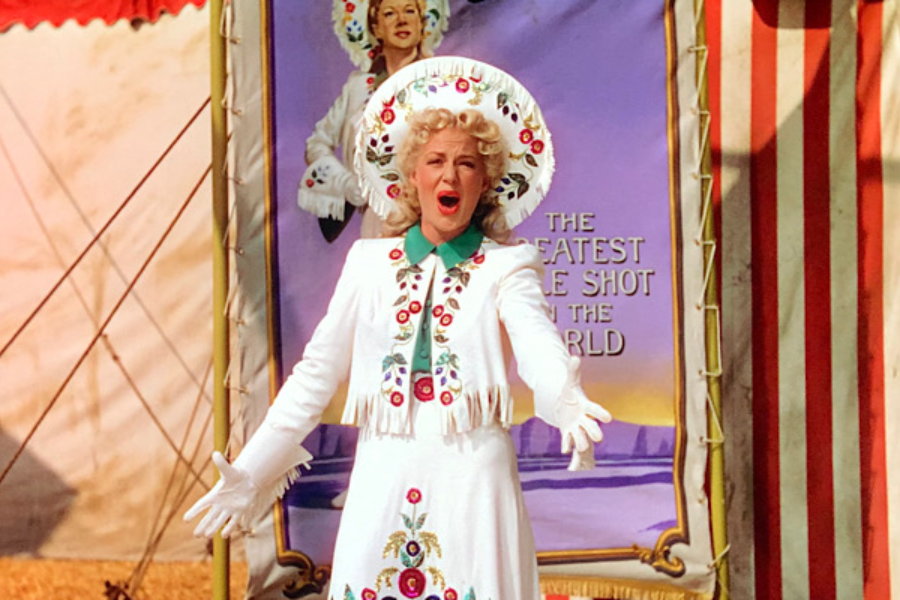
At shows, they punched free tickets with bullet-sized holes—“Annie Oakleys,” people called them. The term stuck. Baseball even borrowed it: a walk, a free pass to first base.
Her name became shorthand for impossible precision. She was more than a performer—she was an idiom, a metaphor, an enduring part of American speech.
But Annie didn’t pause to admire her cultural immortality. She simply loaded her rifle, smiled at the crowd, and whispered, “Watch this.” Because the next shot was always the best one.
The Gun That Bit Back
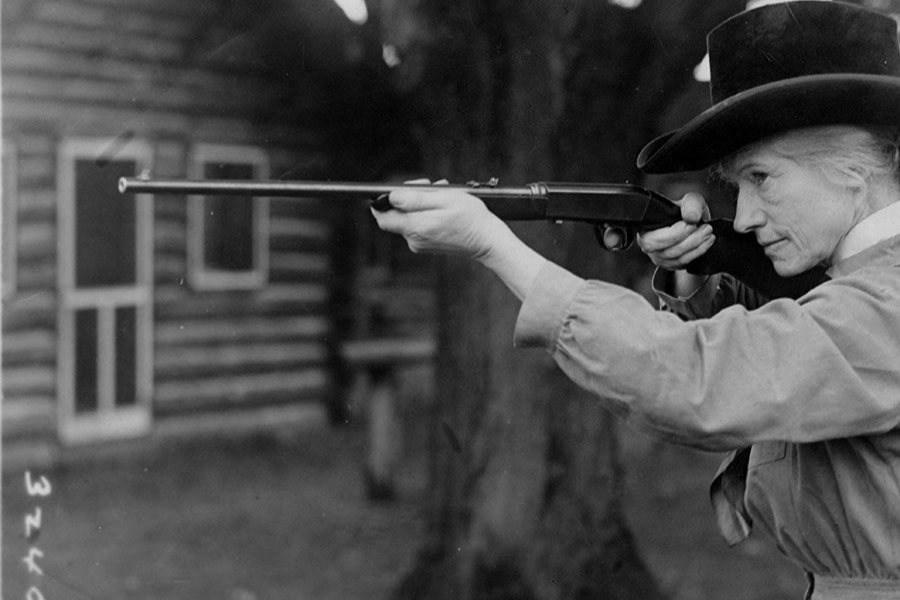
The crowd held its breath. Annie raised the rifle—then, boom. The gun exploded mid-shot, shattering in her hands. Metal tore through the air. She collapsed, blinded and bleeding.
Shrapnel scarred her face. Powder burns singed her skin. One eye clouded with pain. “Is she done?” the whispers circled. Annie vanished from the stage for weeks.
But when she returned, applause thundered. The scars remained, but her aim never wavered. She adjusted her grip—and once again, the bullets obeyed. One can only wonder: How come she was so good at it?
Her Father’s Silent Legacy

Jacob Mosey served in the War of 1812, a quiet man with calloused hands and tired eyes. When Annie was born, he was already approaching fifty.
He died when she was six. Pneumonia took him, but not before he passed down a rifle, a set of values, and a steady gaze that said, “Endure.”
She carried his legacy in her bones. Each shot she fired echoed the patriotism he lived. She didn’t just honor him—she amplified him on every stage across the world. His efforts were not put in vain as Annie became…
America’s First Female Sports Star
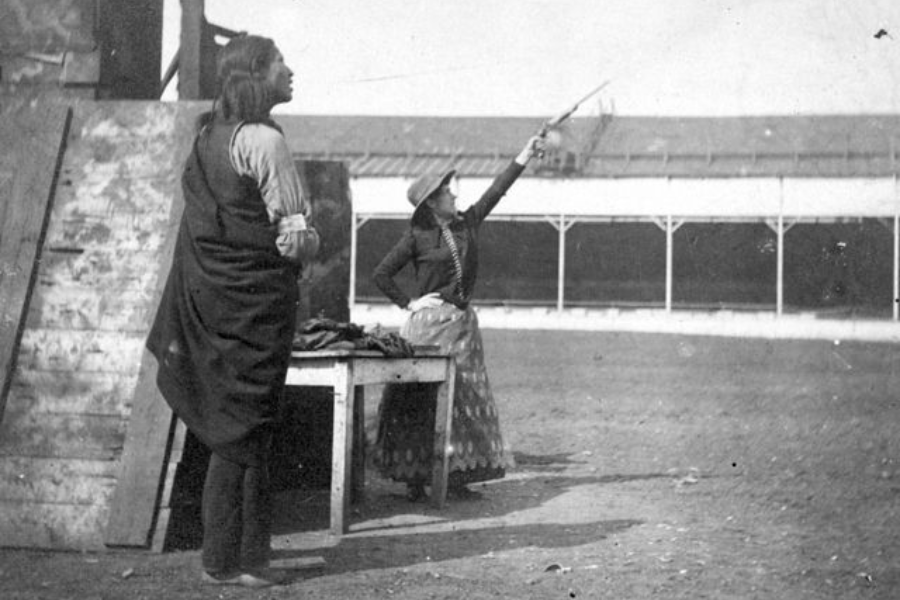
Before Babe. Before Wilma. Before Serena, there was Annie. She was America’s first female sports celebrity, her name lighting up posters, newspapers, and circus tents from coast to coast.
She wasn’t just a performer; she was competition incarnate. Sharpshooting required precision, speed, and nerves like steel. And Annie didn’t flinch—not in front of royalty or rebels.
Men respected her. Women admired her. “If she can do that,” girls whispered, “why can’t we?” Annie didn’t just break glass ceilings—she shattered them with a single shot.
Dave, Her Dog and Shadow
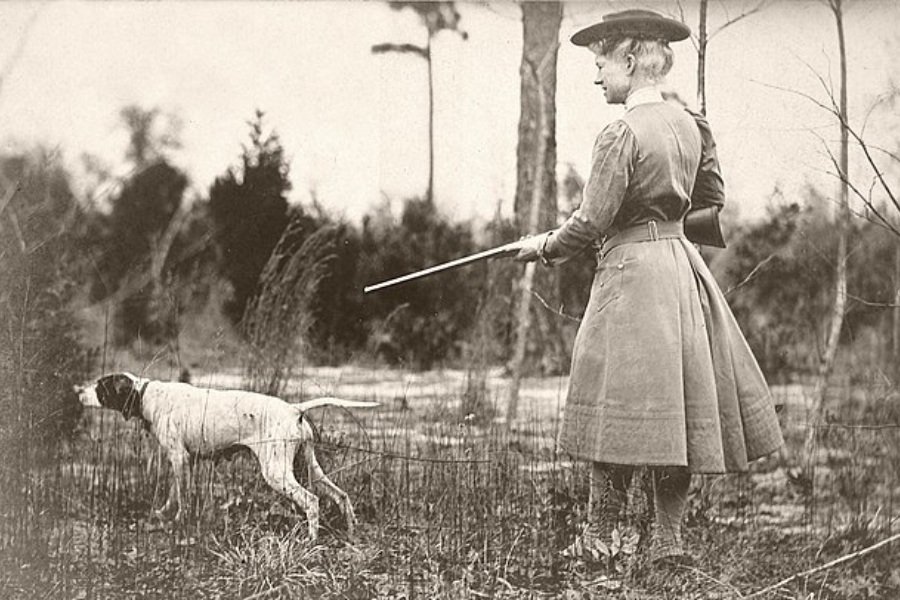
Before the stages and fanfare, there were woods. And in those woods, there was Dave—a wiry hunting dog with a nose for game and unwavering loyalty to Annie.
He retrieved rabbits. He waited silently at her heel. She often said, “He’s got better instincts than half the men I’ve worked with.” Dave never missed a signal.
Together, they trained. Together, they survived. Annie’s aim was hers—but her rhythm came from years spent in the wild beside a dog who believed she was gonna be a legend!
The Dime Shot Nobody Believed
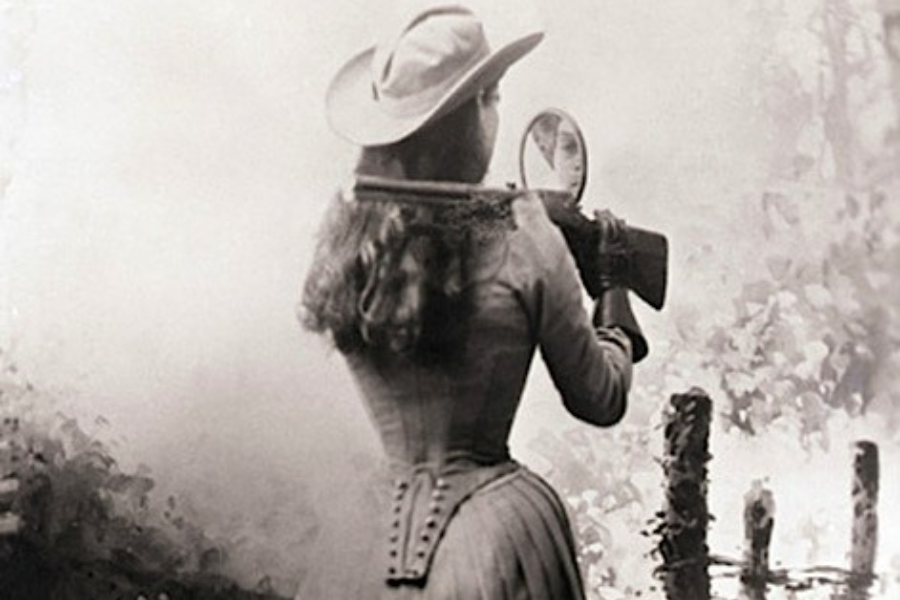
Ninety feet away, a dime balanced on edge. Annie inhaled, exhaled, squeezed the trigger—crack! The coin split in two. Gasps rippled. One man fainted. Another shouted, “Witchcraft!”
She repeated it often, sometimes upside down, sometimes over her shoulder using a mirror. Every time, the coin cracked perfectly. No trick. No scope. Just raw, blinding talent.
The shot became legend. People brought their own coins, daring her. She never turned them down. But behind every display was a woman chasing perfection, one bullet at a time.
Quiet Scholarships, Loud Impact

Beneath her fame, Annie had a quiet mission. She took earnings from sold-out tours and sent anonymous checks to schools, each labeled “for a girl who dreams big.”
She never revealed her name. Many students never knew who paid their tuition. “Let them think it was fate,” she once whispered. “Fate needs help sometimes.”
To Annie, bullets changed targets. But knowledge? Knowledge changed lives. While crowds cheered her rifle, her proudest shots were fired in silence, aimed straight at inequality.
Secrets in a Sharpshooter’s Trunk
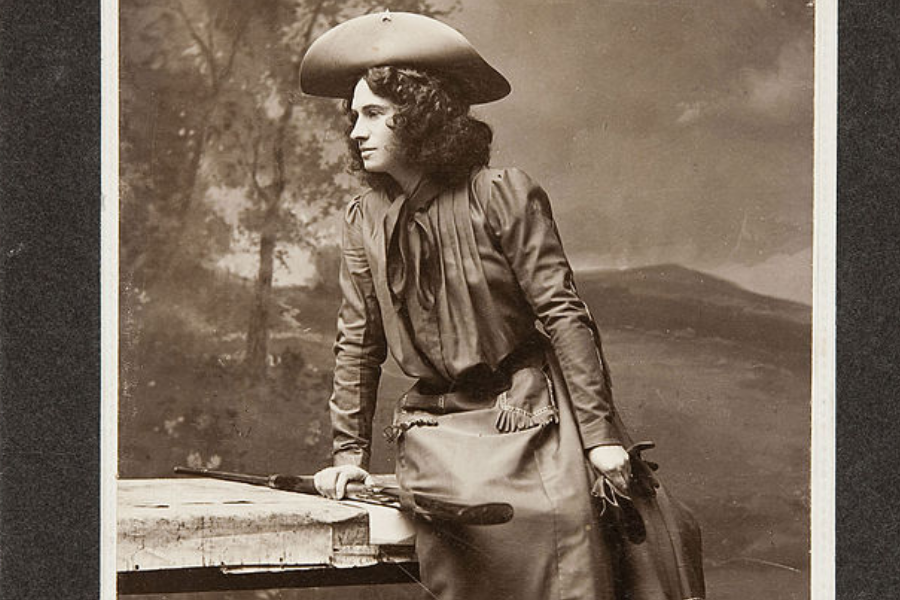
Constant travel demanded innovation. Annie owned a handcrafted travel trunk—part wardrobe, part armory. Hinges clicked open to reveal hidden drawers, false bottoms, and velvet-lined gun cradles.
She stored pistols behind false panels. Letters, pearls, sketches, even bullets had places no thief could reach. It was half luggage, half puzzle box of secrets.
In every new town, Annie would unlatch its compartments with precision. But one drawer remained locked to others—her private notes. What she wrote in there, no one ever saw.
The Rifle She Loved Most
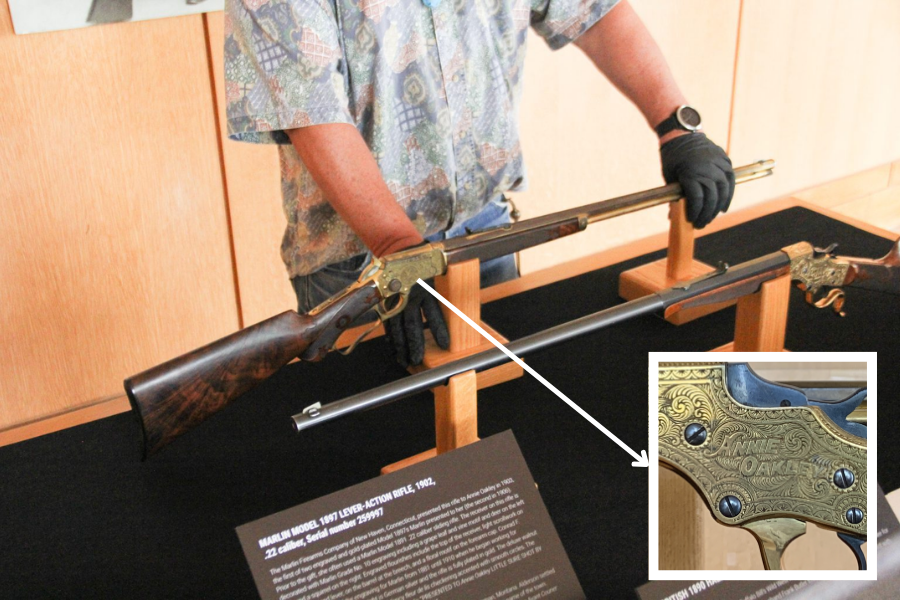
Among dozens of guns, one ruled them all—her Marlin 1891. Smooth lever action. Pearl inlay. Just the right weight for her size and lightning-fast draw.
The .22 caliber made it ideal for shows. She could fire, reload, and reset with elegance, never fumbling. “Feels like it breathes,” she once said of the rifle.
Marlin built a custom version just for her, engraved with her initials. She didn’t name it, but she spoke to it sometimes. And it never let her down. In fact, it opened the door for Annie to train an empire!
Training an Empire
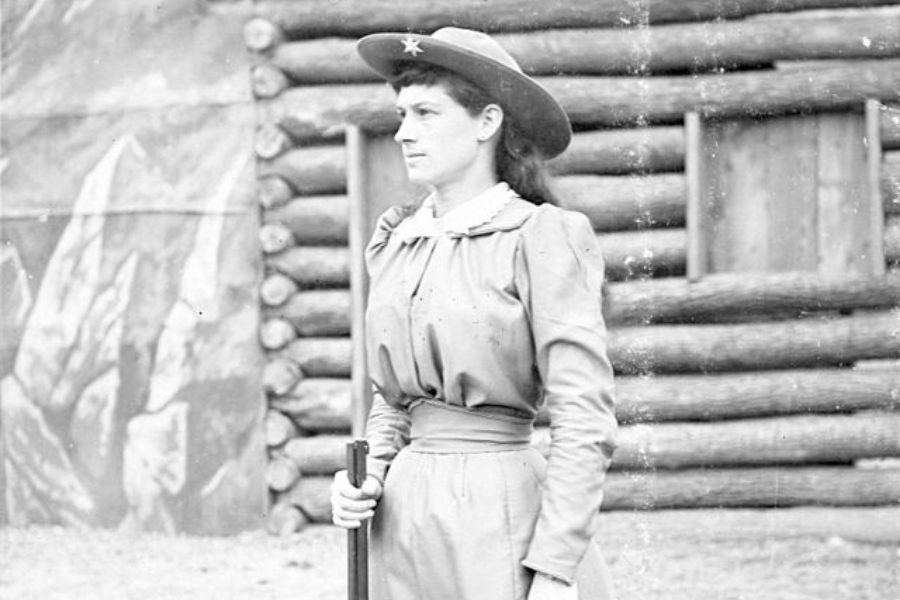
In India, word of Annie Oakley spread like monsoon winds. A maharaja requested a private demonstration. She obliged—rifle in hand, veil fluttering, smile sharp as steel.
His royal guards watched in awe. One by one, she showed them how to breathe, squeeze, and aim. “Not brute force,” she said. “Just control.” They listened.
When the lesson ended, the guards bowed. The maharaja clapped. Annie bowed back, hiding a grin. The girl from Ohio had just schooled an empire’s elite.
Cardboard Fame

In the 1890s, cigarette cards were all the rage—boxers, actors, generals. Then came Annie. Braided hair. Rifle poised. Eyes like flint. She was the only woman featured.
Kids traded them. Collectors treasured them. Some fans traveled miles just to get one signed. “You’re better than Buffalo Bill,” one boy shouted. She just winked.
The cards live on—framed in museums, auctioned for thousands. But to Annie, they were nothing special. Just paper. Her real legacy, she knew, couldn’t be held in a hand.
Laughs Between the Bullets
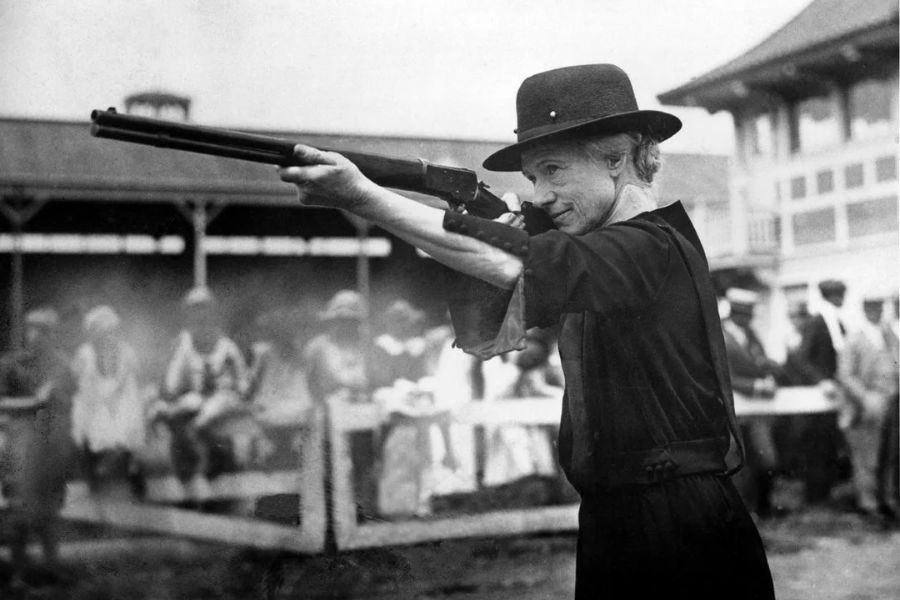
She’d roll her eyes mid-show. “Oops,” she’d say—then nail the bullseye anyway. Laughter followed every shot. Annie Oakley didn’t just aim straight—she charmed sideways.
Frank was often her target. “I married him ‘cause he’s a bigger man to shoot around,” she’d tease. The audience roared. Then—crack!—another impossible shot hit home.
“I ain’t afraid to love a man,” she’d quip, “I ain’t afraid to shoot him, either.” Behind the jokes, Annie carried a truth the world was still catching up to.
Leather Beneath the Lace
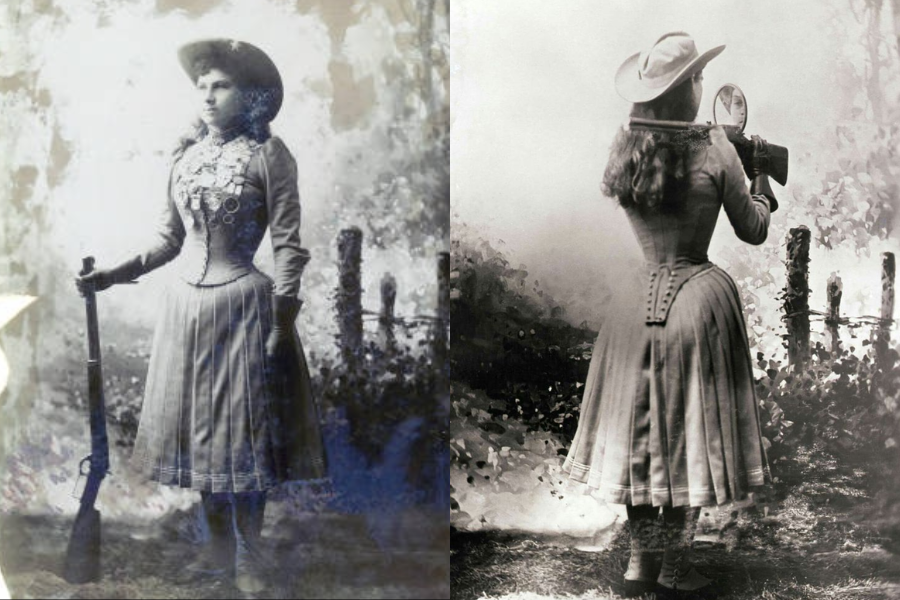
A Victorian corset wasn’t made for recoil. But Annie didn’t adjust to fashion—fashion adjusted to her. She stitched leather inside hers, right where the rifle kicked hardest.
Beneath lace and silk was armor. It protected her ribs, kept her posture tight, and reminded onlookers: this lady’s elegance didn’t come at the expense of function.
Every performance, she fired in style—unshaken, unbruised. What others wore for vanity, she adapted for war. And behind that corset? A spine made of unbendable resolve.
An Elegant Signature
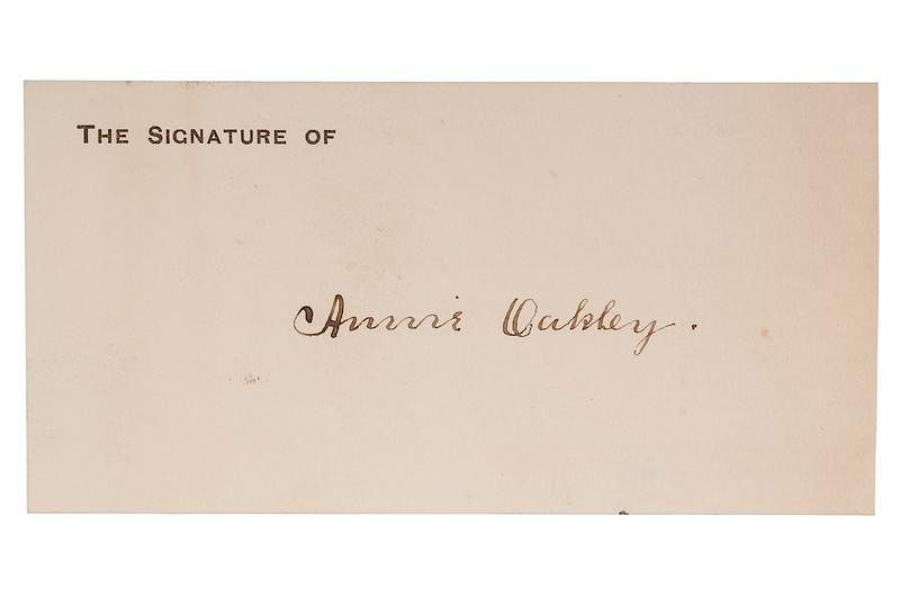
Even her autograph was precise. Graceful loops. Balanced spacing. No ink blot dared stain Annie Oakley’s paper. She signed hundreds, maybe thousands, but each was done with care.
Young girls clutched her notes like heirlooms. “To Miss Clara—Aim true,” she’d write. Sometimes she added quotes. Always hopeful. Always legible. “Leave a mark,” she once said.
Even in exhaustion, her pen never wavered. The same hand that shattered coins also composed beauty. And long after she was gone, those letters would whisper her story.
Hand-Cast Perfection

She sat at her workbench, hands steady. Melted lead poured into molds. Each bullet shaped by touch, weight-tested, and polished. “Factory rounds wobble,” she’d say. “I need certainty.”
No assistants. No shortcuts. Annie believed in controlling the smallest details. Trick shots didn’t allow for error. Her bullets flew straight because she made them that way.
She even altered powder loads for mirror shots. “Science,” she told a reporter. “And a little faith.” The crowd never saw the prep—only the perfection.
Saying No to Hollywood
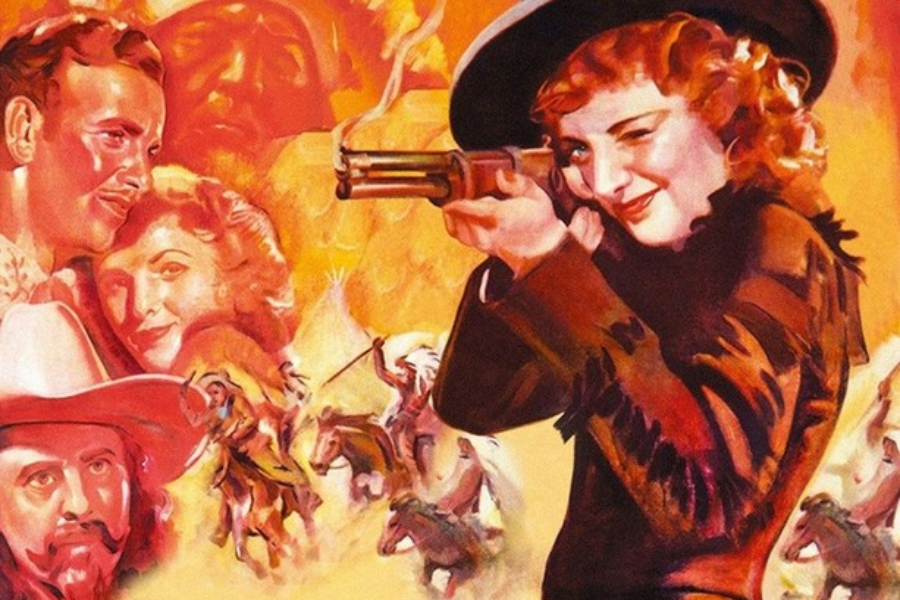
Tinseltown sent telegrams: “Come to California.” They offered scripts, salaries, and headlines. Annie read them all and declined. “It’s not real,” she told Frank. They want a myth, not a woman.”
She had filmed with Edison. She’d starred in The Western Girl. But the lights of Hollywood felt cold. “Give me an audience I can smell,” she said.
She chose to live authentically over fiction, the rush of applause over the quiet hum of a camera. But Annie’s incredible story deserved a platform of permanent relevance, which didn’t stop the creative minds from honoring it.
America’s Favorite Myth
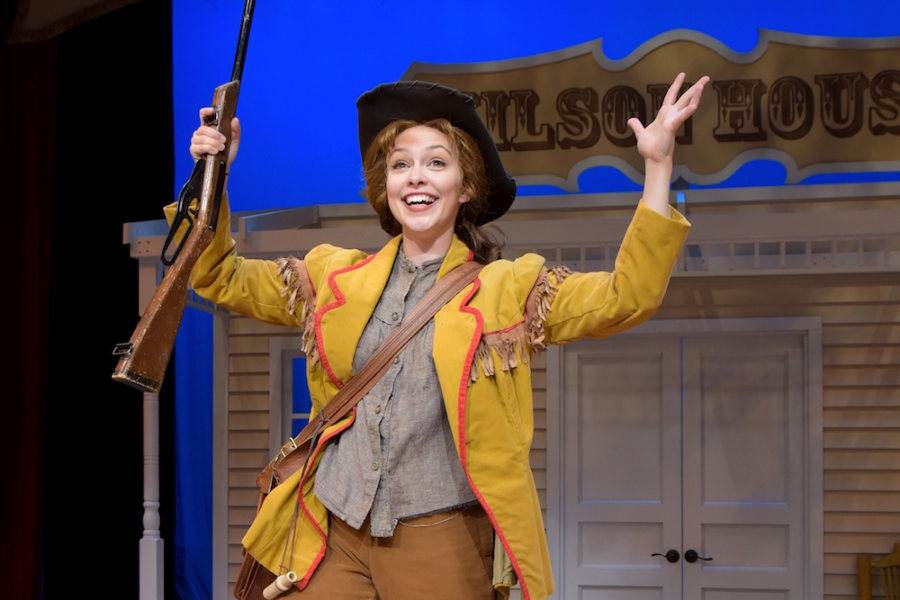
Annie Oakley, this name leapt from history books onto marquees, soundtracks, and silver screens, reshaped for generations who never heard her rifle crack.
In 1946, Broadway lifted the curtain on Annie Get Your Gun. Irving Berlin gave her swagger, romance, and melody. “Anything You Can Do” turned her life into a feminist anthem.
“Oakley was a paradox,” said Susan Carlson. “She performed femininity while defying it. That contradiction is why she remains so compelling today.” Her myth danced in heels and hit like thunder.
The Last Shot
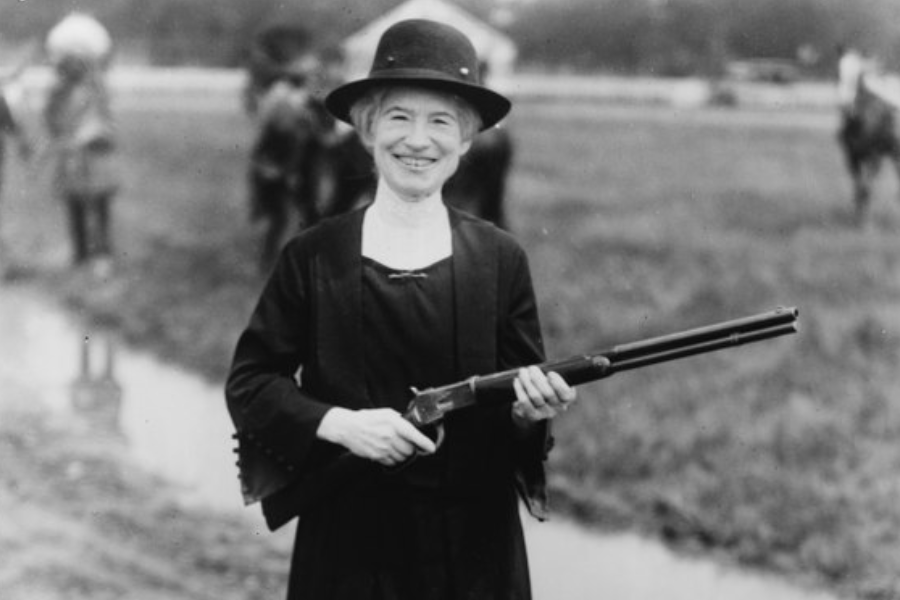
Annie Oakley died on November 3, 1926, in Greenville, Ohio, from pernicious anemia—a slow, wasting illness that stole her strength but never her fire.
She was more than a marksman. She pioneered possibility, firing not just bullets, but messages: “Aim at a high mark and you’ll hit it. Not the first time, not the second… but keep on aiming and keep on shooting.”
She left us with truths that still speak louder than applause: strength and grace will never be too much for your hands to hold. Own it, the world is all yours.





